Looking back at it now, it might be difficult for some modern gamers to fully understand the excitement that has surrounded The Last Guardian since Team ICO first announced it in 2009. Following the artistic triumph that was 2005’s Shadow of the Colossus, fan expectations for the next Fumito Ueda game couldn’t have been much higher. A full five years after it’s original intended release date, The Last Guardian is finally here. While the artful minimalism that made Shadow of the Colossus and Ico so unique is intact, technical issues plague the game, compromising what would have otherwise been a simple, but emotionally charged experience.
The game opens as the boy, no name given, wakes up in a cave beside a wounded, but chained up, creature. A combination between a dog and a bird, known as a Trico, the animal is initially aggressive, snapping at the boy even as you try to help it. Once you feed it however, pull the spears from its side, and release it from its chains, Trico begins to warm up to the boy. The relationship between the pair is the beating heart of The Last Guardian.
Emerging from the cave, they see they are at the base of a massive valley of ruins. Together, with no way to go but up, the boy and Trico begin crisscrossing their way through the ruins, climbing higher as they do. Though the narrative does develop more in the final stretches of the game, even explaining how the boy and Trico came to be in the cave, the majority of the roughly 10 hour run-time is devoted to the simple pursuit of climbing higher.
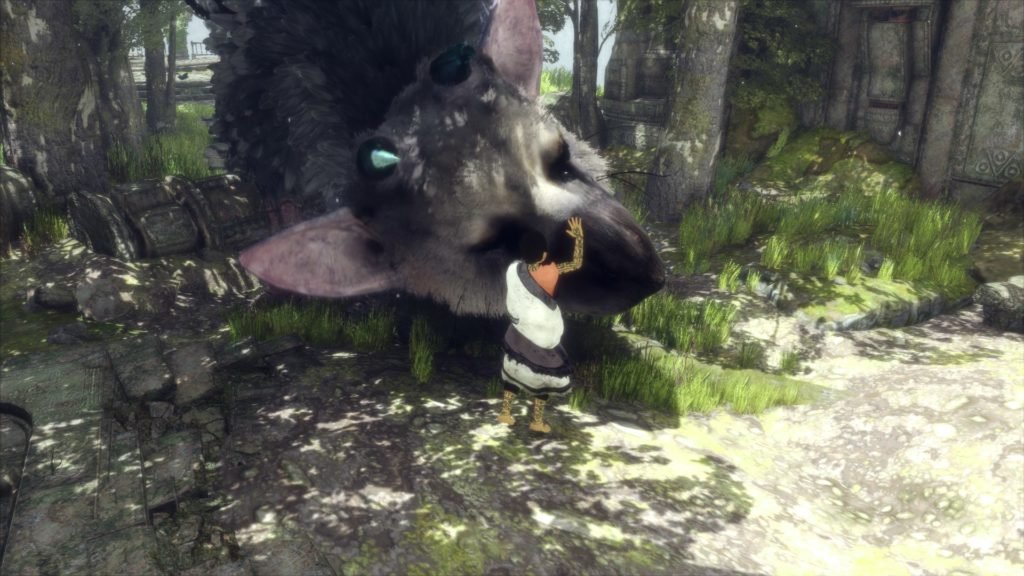
To be fair, despite the game’s very serious problems, it does have its moments. The final two hours or so are especially stunning, both visually and emotionally. Even before that though, Trico is beautifully realized and lifelike throughout the entire game. It nuzzles you if you stand in place for too long, it shakes water from its body when it climbs out of a pond, and it bounds happily through the sun when given the chance. Trico is curious and playful, often scared, but just as often loyal. An immeasurable amount of thought and care went into crafting Trico as a believable, emotional character in the story.
And it’s not wasted effort. Trico is the main focus for the game. The relationship between the two characters aside, The Last Guardian is a relatively simplistic puzzle platformer. The only unique aspects of it enter the game through Trico’s presence. There is the rather predicable side of things, such as pulling switches to open doors for Trico and climbing on its back to reach out of the way areas. But there are also a handful of more clever aspects, like tricking Trico into pulling on a chain by hanging food from it, or using the wave created when Trico jumps into the water to boost yourself to a higher ledge. Trico’s personality does keep the platforming from ever becoming dull, but the simple fact is that unique puzzle mechanics are few and far between.
From a gameplay point of view, you spend the vast majority of your time in The Last Guardian either opening doors for Trico, finding glowing barrels of food and carrying them to the creature, coxing it to the right spot so you can use it as a platform to climb on, or riding on its back and giving it commands of which direction to go. When compared to modern puzzle platforms such as Unravel and Inside, and especially more niche games like Fez and The Swapper, the puzzles and platforming in The Last Guardian don’t have the depth and creativity to stand on their own.
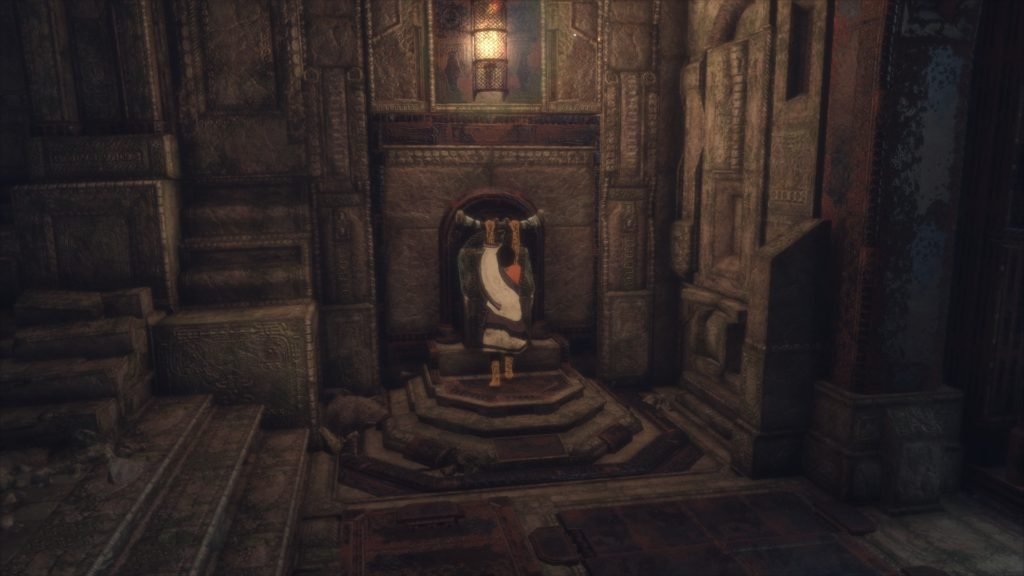
That then leaves the rest of the game, the combat, the visuals, and the strength of the emotional connection, to pick up the slack. Throughout your time climbing out of the valley, a number of stone guards come to life and try to stop you. Emphasizing how vulnerable the boy is, there is very little he can do against the guards on his own. Instead, guards pick him up and carry him towards one of the many blue doors spread throughout areas. If they carry you through one of the doors, the game ends.
While they carry you however, you can struggle and break free. Symbols flood your screen, each additional guard nearby adding to the number. To get rid you them you have to mash all of the buttons on your controller, erasing each symbol until the guard finally drops you when your screen is clear. Note that you aren’t simply mashing a single button, instead pushing all eight face buttons, and four shoulder buttons, repeatedly, for 3-4 seconds every time a guard picks you up. Though admittedly terrifying and frantic the first few times, the system quickly wears out its welcome as the groups of enemies become larger and more frequent the deeper into the game you go.
When not mashing buttons, the boy’s role in combat is to shove against enemies to throw them off balance for a few seconds and to pull the heads off of any guards Trico manages to knock over but not destroy. The main action is left to Trico. It jumps, swipes, and bites, wreaking general havoc. During the early game, there actually isn’t much for the boy to do, other than avoid being grabbed. Eventually the guards begin carrying stain-glass shields that terrify Trico and keep it at bay. Trico will only continue attacking once you shove against the guard in question, knocking the shield out of his hand. Overall, the combat showcase’s the boy’s reliance on Trico, but does little in offering a challenge beyond literal button mashing.
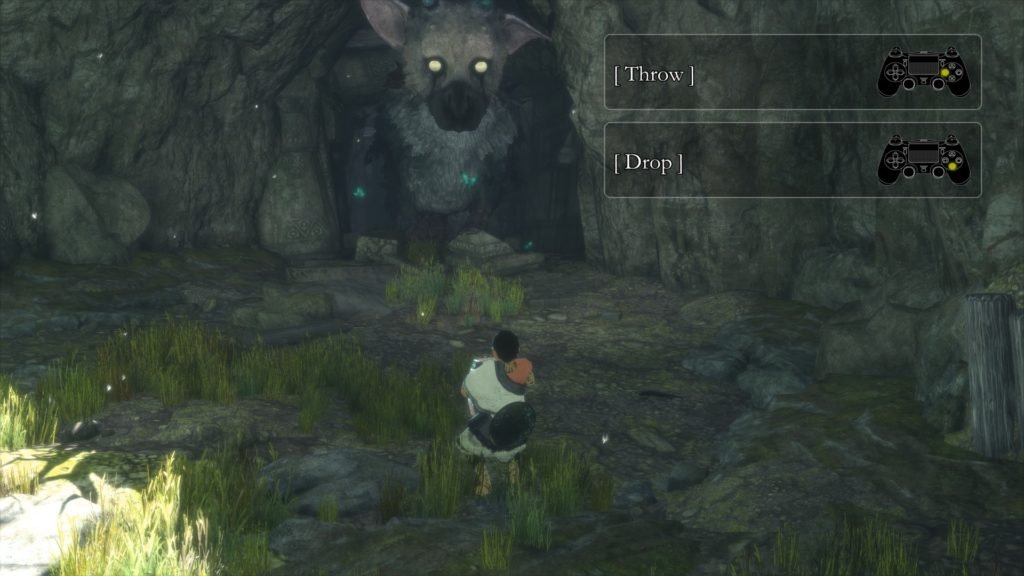
That then leaves the visual presentation and the emotional bond. It’s unfortunately in both of these areas that The Last Guardian’s poor design choices and technical problems step in to dominate the experience. Aside from frequent and noticeable frame-rate drops and the constant, far-too-large tool tips that clutter the screen, the most notable issue involves the camera. The Last Guardian, much like Shadow of the Colossus, plays with the player’s feeling of scale. You are a very small boy, and your companion a massive creature, both traveling through very narrow corridors. Due to this, the camera often passes through walls, passes through Trico, gets so out of sorts that the screen simply goes black as it resets itself, or quite simply freezes, ensuring you have no way of seeing your character or progressing much of anywhere. In this way, fighting against the camera becomes as much a part of the game’s a challenge as anything else.
Even when the camera does work however, the world of The Last Guardian is not much to look at. The final hours of the game are set in early morning with the sun just beginning to rise. In that lighting, the world is breathtakingly gorgeous, with the distance clear and colorful. With that in mind, it’s then a huge surprise to consider the rest of the game. Set in mid-day, the colors of the world are washed out and dulled, the distance turned to a pasty white nothingness. The artistic choice to make the end of the game more colorful and impactful makes sense. A game like Journey is an example of developers choosing to do something similar. But in the case of Journey, the visual intensity of the ending doesn’t mean the rest of the game was artistically muted or boring. It’s possible to have a clouded, darker world without loosing the visual flavor that brings it to life. The Last Guardian simply doesn’t do that.
The whitewashed distance comes across as a technical limitation until the final hours prove it otherwise. The boy and more than a few environmental textures in the game aren’t as lucky. Trico is exquisite, with its feathers fluttering individually in the wind. A look at the boy’s face however, shows little of the same attention. The visuals of the boy are flat and featureless. Couple this with the common problems of the boy’s clothes clipping improperly and Trico’s feathers protruding through the boy while you cling to the creature’s back, and the player character sticks out as unpolished and awkward.
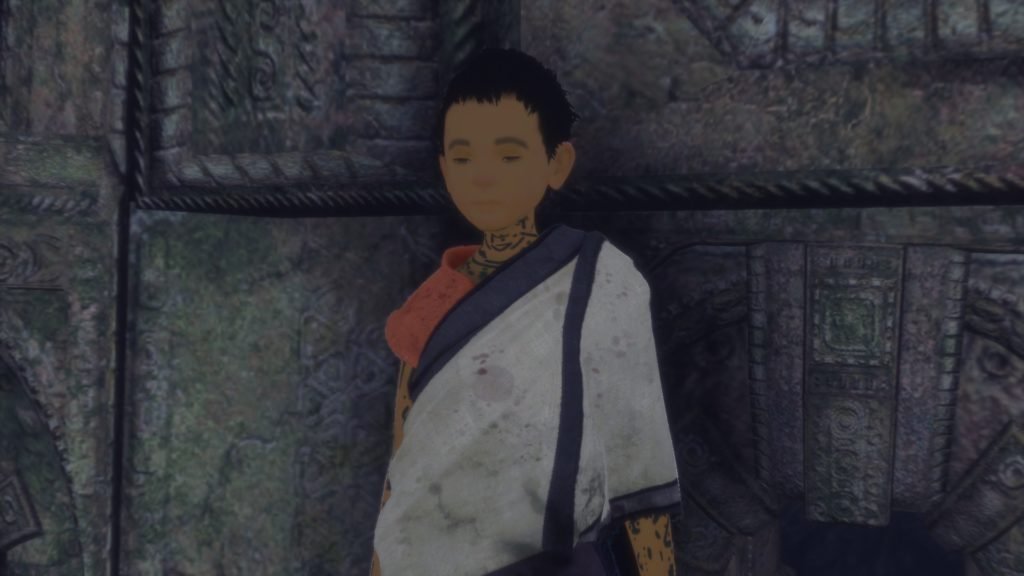
All of this pales in comparison to the most fundamental problem with the game however, Trico itself. There is a lot to admire and praise about the creature, from the animations, to its personality and emotions. One aspect you can’t praise though is its AI. A lot of small steps went into to making Trico react to things realistically. It gets worked up during fights and will continue to swipe at broken guards and jump around even once the fight is over, until the boy climbs on it’s neck and pets it to calm the creature down. While a touching detail the first few fights, the act loses its meaning, becoming a repetitive chore by the ninth or tenth.
That said, at least that portion of Trico’s responses works. The same cannot be said of Trico following the boy’s commands. Large portions of the game involve having Trico stand in a specific spot or carry you a specific direction, leaping from pillar to pillar for instance. In an effort to make Trico more like a wild animal, it intentionally doesn’t always follow your commands. Numerous glitches in the AI then take that hesitation to the next level. I spent more time pressing the R1 button, commanding Trico to move, than I did actually solving any of the game’s puzzles. When commanding Trico to jump to a ledge repeatedly, without it doing so, the natural assumption is that it’s the wrong way to go. More often than not, I would return to the same ledge again, after wasting time looking for a different path, for Trico to make the jump immediately. In some of the worst cases, Trico did not simply fail to follow commands, but actually froze in place, forcing me to restart from the last checkpoint in order to progress.
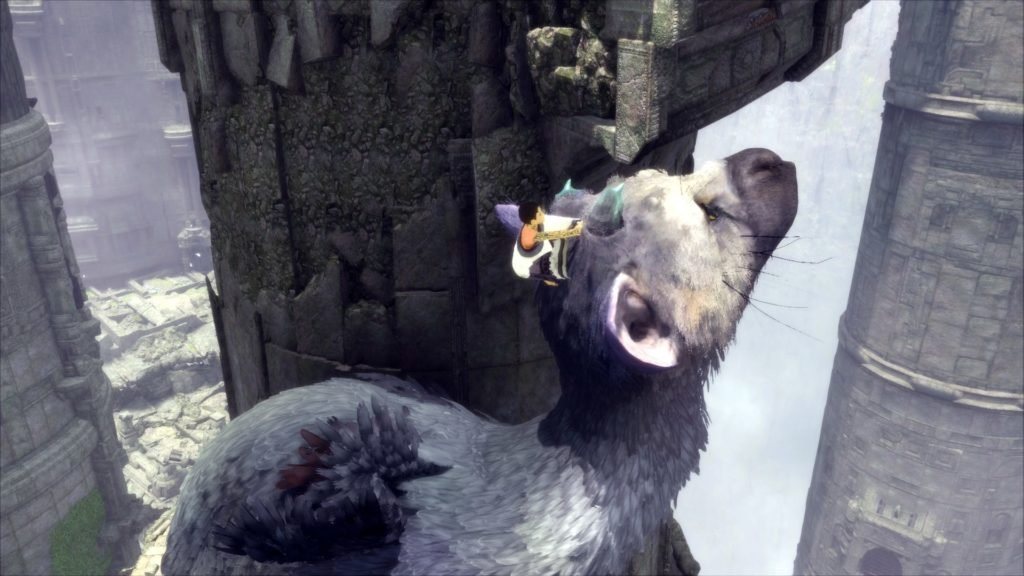
The Last Guardian asks you to spend an inordinate amount of time not in control of the actual action of the game. On it’s own, that could be problematic. But when you layer in Trico going the wrong direction despite your commands, refusing specific inputs, or freezing all together, you end up with nothing but frustrating game design, made worse through numerous glitches. And it’s impossible for any meaningful emotional attachment to take place when you spend an overwhelming amount of time frustrated.
It might be strange to hear that a game which spent nearly a decade in development needs more polish, but it’s true. After patches and more time and care, it is entirely possible that The Last Guardian will be a much different game down the road.
Despite the things it gets right, it is incredibly hard to recommend. At its core, the game is a 10-hour, linear, unimpressive puzzle platformer with very little replay value beyond collectables and trophies. And for many, that alone is not enough to satisfy the rather steep full-retail AAA price. Even if price isn’t an object, the team at Japan Studio have made a game with a clear goal of touching the hearts of gamers. It’s sad to say that the game released only moderately reaches that goal.
This game was reviewed on a PS4 console, with a copy purchased by the reviewer.
- Trico is adorable
- The final hours of the game are incredibly powerful
- It stays with the minimalism that made previous games so unique
- The camera barely works
- Bland puzzles and visuals
- Trico's AI breaks... a lot

